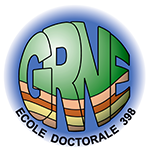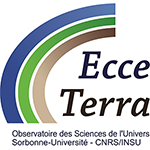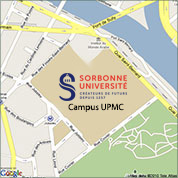Séminaire ISTeP - Brian Evans
(MIT, USA)
Confronting Complexity: Towards a more detailed description of creep in rocks in the Earth’s crust
Crustal rocks deform by a rich variety of physical mechanisms and often display beautiful, but bewildering, complexity of strain. Steady-state creep constitutive laws have been useful in providing first-order descriptions of rock strength at depth, but, not surprisingly, they often fail to describe many commonly observed geologic structures or processes. So, for example, we do not understand sufficiently the influences of multiple mineral phases or fluids on rock strength, the effects of concurrent metamorphic reactions on creep, or the causes of strain localization. Triaxial torsion tests done to high strain often indicate that crustal rocks deforming by creep harden up to strains of about 1. This peak in strength is typically followed by softening up to strains of 5 or more. The mechanical state variables that might evolve include grain size, LPO, pore geometry, or underlying dislocation structures. By using a micro strain mapping technique during the hardening phase in marbles, we are measuring the partitioning of strain amongst micro fracturing, twinning, dislocation glide, and grain-boundary sliding. Results from these experiments and from those measuring the influence of effective pressure, strain rate, and temperature on the rock strength indicate that all of the fracturing, gliding, sliding and twinning mechanisms contribute to the total aggregate strain over a wide range of conditions. Likewise, the rate of evolution of grain size during dynamic recrystallization is also influenced by changes in the relative contributions of the various deformation mechanisms. Owing to these tightly coupled relationships, it is likely that transient creep is common during tectonic deformation, even within rocks composed of a single phase. In addition, it may be possible to use quantitative observations of strain partitioning within naturally deformed rocks as a way to constrain the conditions of deformation.
08/11/2013 à 12h30, Salle Fourcade
Egalement dans la rubrique
Chiffres clés (Mars 2025)
L'ISTeP comprend 131 membres dont :
Permanents (66)
- Professeurs : 17 (+2 PAST)
- Maîtres de conférence : 26
- Directeurs de recherche CNRS : 1
- Chargés de recherche CNRS : 1
- ITA : 19
Personnels non permanents (65)
- Collaborateurs bénévoles / émérites : 17
- Chaire de professeur junior : 1
- Enseignants-chercheurs contractuel : 2
- 1 MCF accueil en délégation
- ATER et Post-Docs : 9
- Doctorants : 32
- ITA-BIATSS : 3





